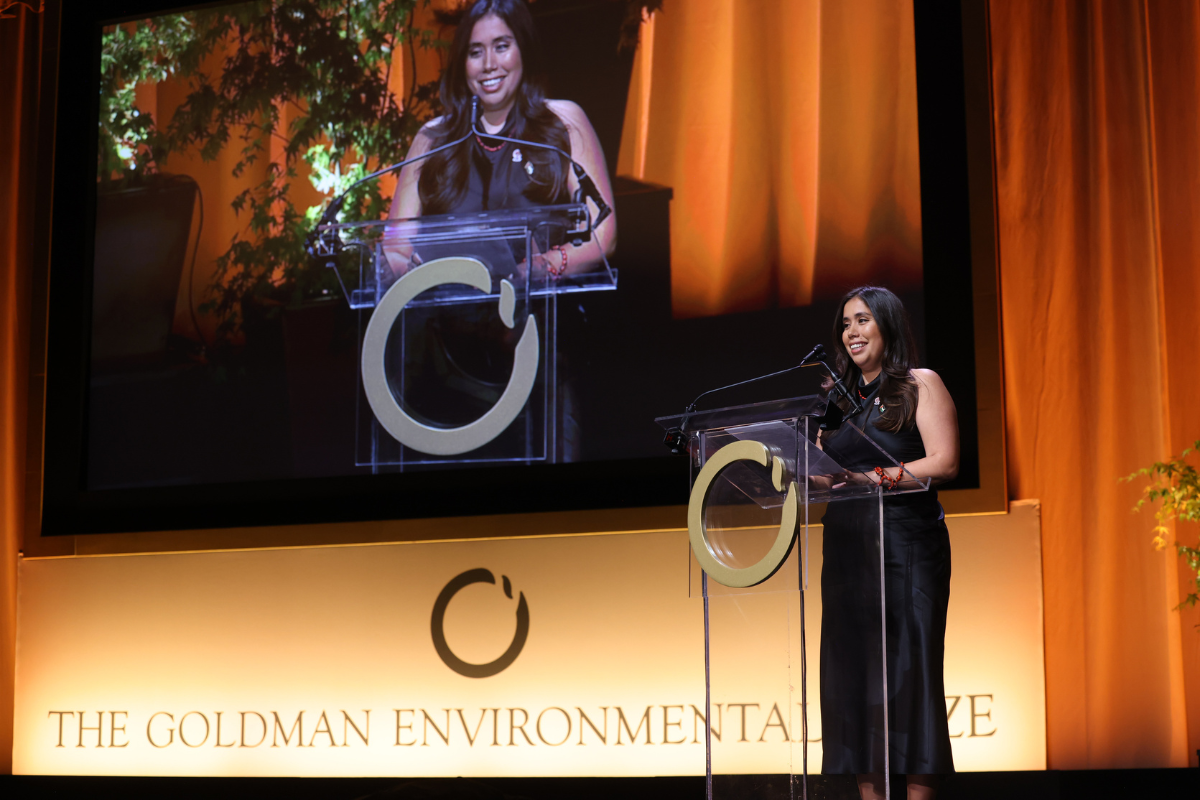Wildcats show some bite in summer league
SAN BERNARDINO, Calif. – The atmosphere was sticky at the Pearce Sports Center during the Coyote Summer League on Thursday, July
Andrea Vidaurre grew up in the Inland Empire and has been a driving force in the fight to improve California’s air quality.

Andrea Vidaurre, an Inland Empire native, has won the 2024 Goldman Environmental Prize for her impactful efforts to reduce transportation emissions.
Why it matters: The 2024 American Lung Association "State of the Air" report has once again named San Bernardino County the worst in the nation for ozone pollution. After years of improvement, air quality has declined, with public health experts referring to the area as a “diesel death zone.” Cancer, asthma, and premature death rates have all increased in recent years, impacting the more than four million people living in the Inland Empire, most of whom are working-class Latino communities.
Growing up and seeing how the toxic emissions from the freight industry, including unloading trucks, moving packages and loading trains, impacted her friends, family and community, Vidaurre, 29, was inspired to take action.
Details: Vidaurre is the cofounder and policy coordinator of the People’s Collective for Environmental Justice, a community-based organization in the Inland Empire.

In 2018 Vidaurre recognized the need for statewide action and pushed the California Air Resources Board (CARB), which was formed in 1967 to establish air quality regulations to protect public health and regulate major sources of pollution, to adopt stricter truck emission regulations.
In addition to helping with workshops, analyzing proposals, and coordinating “toxic tours” to show the direct impact of the freight systems, she also led a successful campaign that convinced state lawmakers to call on CARB to strengthen truck emission rules, which they did in November of 2019.
Thanks to Vidaurre’s efforts, CARB enacted the Advanced Clean Trucks rule in 2020, which set a timeline for the sale of zero-emission trucks in the state. A number of states adopted these regulations, but Vidaurre wasn’t satisfied yet.
After another two years of activism and policy proposals, including organizing a caravan of concerned citizens to meet in Sacramento for a rally outside the CARB offices, the translated community testimonies, public comments and words Vidaurre shared proved to be successful and CARB strengthened the regulations again.
CARB, with Vidaurre present, adopted the Advanced Clean Fleets Rule and the In-Use Locomotive Rule to push for the eventual complete phaseout of truck emissions. These rules called for shifting all new heavy-duty truck sales in California to zero emissions by 2036 and heavy-duty truck and locomotive adoption by 2045.

California and pollution: California is the nation’s most populous state, and also the worst in terms of air pollution. Because of this, in 1970, the state was granted the right to adopt stricter standards to protect residents from vehicle emissions under the U.S. Clean Air Act. These stricter regulations have made California an important model for setting national policy.
The rise of next-day shipping has heavily impacted the state, specifically the Inland Empire, because of its proximity to the Long Beach and San Pedro container ports. According to the Pitzer College Robert Redford Conservancy for Southern California Sustainability, the 1 billion square feet of warehousing, freight airports and intermodal rail yards result in about 600,000 truck trips being conducted in the Inland Empire area daily. Combined with rail emissions, this produces 25,000 tons of daily CO2 emissions.
The region is home to about 4,000 warehouses, with over 600 located within 1,500 feet of a public school.
Moving forward: Those interested in supporting Vidaurre’s work can visit the People’s Collective for Environmental Justice website to learn more about their efforts.
Sign up for our weekly newsletter